Sensor Sweep: A. Merritt, Magician’s Skull, Russell Kirk, Micronauts
Monday , 21, October 2024 Sensor Sweep 3 CommentsHorror (Silver Key): I’m a big fan of The Shining, book and film. Both work really well, for slightly different reasons. I encountered the book first, discovering it along with many other horror and men’s adventure titles through my grandfather.
Fantasy (Ken Lizzi): Look, The Ship of Ishtar is an unusual book. There’s no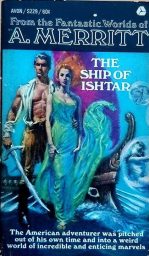 question of that. It dispenses with traditional tropes. A. Merritt does not tread familiar fantasy paths. He picks his own unexpected tangent and proceeds pellmell along it. The pocket universe he creates and its rules appear initially quite strange and arbitrary.
question of that. It dispenses with traditional tropes. A. Merritt does not tread familiar fantasy paths. He picks his own unexpected tangent and proceeds pellmell along it. The pocket universe he creates and its rules appear initially quite strange and arbitrary.
History (Comics Radio): In England, the skeleton of a 5th Century Roman soldier is dug up–wearing a 20th Century wristwatch! One man–recently released from prison–can explain this.
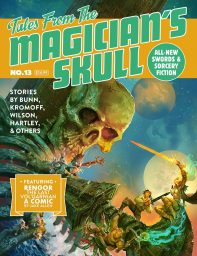 Magazine (Goodman Games): Tales From the Magician’s Skull is a printed fantasy magazine dedicated to presenting all-new swords and sorcery fiction by the finest modern creators in the genre. These stories are the real thing, crammed with sword-swinging action, dark sorceries, dread, and ferocious monsters — and they hurtle forward at a headlong pace.
Magazine (Goodman Games): Tales From the Magician’s Skull is a printed fantasy magazine dedicated to presenting all-new swords and sorcery fiction by the finest modern creators in the genre. These stories are the real thing, crammed with sword-swinging action, dark sorceries, dread, and ferocious monsters — and they hurtle forward at a headlong pace.
Horror (Dark Worlds Quarterly): In honor of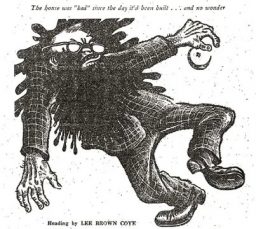 this new volume of Halloween fun, we are going to take a look back at our favorite top ten ghostbreakers from the legendary Weird Tales. The Unique Magazine did not invent occult detectives (that was probably Samuel Warren back in 1830) but old WT did have at least ten of them.
this new volume of Halloween fun, we are going to take a look back at our favorite top ten ghostbreakers from the legendary Weird Tales. The Unique Magazine did not invent occult detectives (that was probably Samuel Warren back in 1830) but old WT did have at least ten of them.
Robert E. Howard (REH World): In September 2024, Patrice Louinet discovered a previously unknown letter written by Howard to Adventure. It was printed on pages 188-189 on December 30, 1923 (Vol. XLIV; No. 3).
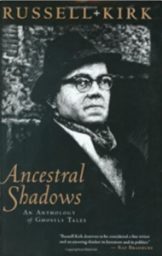 Ghost Stories (Imaginative Conservative): While Russell Kirk (1918-94) is best known as one of the founding fathers of post-World War II conservatism, a cultural critic, historian and political thinker, he has also been praised by the likes of Ray Bradbury, T.S. Eliot, and Madeleine L’Engle as a teller of ghostly tales.
Ghost Stories (Imaginative Conservative): While Russell Kirk (1918-94) is best known as one of the founding fathers of post-World War II conservatism, a cultural critic, historian and political thinker, he has also been praised by the likes of Ray Bradbury, T.S. Eliot, and Madeleine L’Engle as a teller of ghostly tales.
Fiction (Kairos): Let’s face it: The “Christian fiction” label is often slapped on works that prioritize overt messaging over storytelling. Characters in these books and movies tend to feel one-dimensional vehicles for a moral rather than dynamic human beings.
Pastiche (Silver Key): I’m hearing this in the cries of Rings of Power defenders, many of whom admit that while the show is mediocre at best, and plays fast and loose with Tolkien lore in nonsensical ways, they nevertheless continue to watch. Because “its more Tolkien content, and I need more Middle-Earth. I need more content.”
C. S. Lewis (Notion Club Papers): Lewis explains that it was a good thing for him – implicitly in a psychological sense: 1. That he was unconcerned by the question of immortality: of life beyond mortal life.
Westerns (Fifties Westerns): Directed by Anthony Mann Starring James Stewart, Shelley Winters, Dan Duryea, Stephen McNally, Millard Mitchell, John McIntire, Will Geer, Jay C. Flippen, Rock Hudson, James Millican, Tony Curtis Winchester ’73 (1950) is a lot of things—
Robert E. Howard (JM Zub): Continuing my Conan reread for Cimmerian September, the thirteenth published Conan story is The Servants of Bit-Yakin, which arrived in the March 1935 issue of Weird Tales magazine under the renamed title Jewels of Gwahlur.
Comic Books (Hyborian Review): Ever since Titan Comics started releasing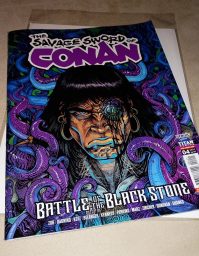 their newly launched Conan the Barbarian series last year pretty much every story has been or had something to do with The Black Stone.
their newly launched Conan the Barbarian series last year pretty much every story has been or had something to do with The Black Stone.
Fiction (John C. Wright): DARKNESS AND LIGHT by Olaf Stapledon was a novel I enjoyed, at least somewhat, in my youth, and I was favorably impressed with Olaf Stapledon’s breadth of imagination.
Rereading it with adult eyes, I am appalled.
Fantasy (Paperback Picnic): Anyway, on to this issue’s review, which is Hugh Cook’s The Wordsmiths and the Warguild (1987). This is the second Cook novel I’ve read, the sequel (or rather sidequel) to the wonderful The Wizards and the Warriors. Book two in the series is shorter, lighter, more fun but less weighty than the first.
Battlestar Galactica (Wert Zone): I decided to combine all available canonical sources to create a new timeline for the Ronald D. Moore incarnation of Battlestar Galactica. This took quite a bit of work, involving comparing dates from multiple sources.
James Bond (Spy Command): In the 1959 novel Goldfinger, Bond checked out a model from the MI6 motor pool. Bond considered an Aston Martin DB3 and a Jaguar model. But the agent selected the Aston, feeling it would fit his cover identity better. The movie adaptation would include the DB5.
Comic Books (Balladeer’s Blog): This weekend’s escapist, light-hearted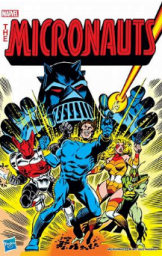 superhero post from Balladeer’s Blog will look at some of the stories Marvel Comics created around the licensed I.P. of Micronauts toys.
superhero post from Balladeer’s Blog will look at some of the stories Marvel Comics created around the licensed I.P. of Micronauts toys.
Crime Fiction (Grandest Game): Not quite top ten detective novels of the 1930s.
 Fiction (Fantasy Literature): A Night in the Lonesome October (1993) is narrated by the aptly-named Snuff, a dog who is the familiar of a man named Jack. Snuff is more than just a dog; at the beginning of the novel he comments cryptically, “I like being a watchdog better than what I was before he summoned me and gave me this job.”
Fiction (Fantasy Literature): A Night in the Lonesome October (1993) is narrated by the aptly-named Snuff, a dog who is the familiar of a man named Jack. Snuff is more than just a dog; at the beginning of the novel he comments cryptically, “I like being a watchdog better than what I was before he summoned me and gave me this job.”
James Bond (Vintage Pop Fiction): Kingsley Amis wrote Colonel Sun (using the name Robert Markham) in 1968. This was the first of the many James Bond continuation novels. I have always avoided these novels because I don’t really approve of other writers carrying on the adventures of characters created by deceased writers. I have however made an exception in the case of Colonel Sun.
Comic Books (Por Por Books): ‘John Carter: Warlord of Mars’ omnibus was issued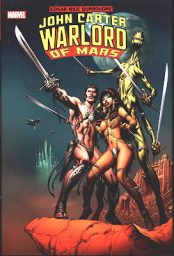 by Marvel in 2012. At 626 pages, it’s a mid-sized omnibus, as these things go. It contains all 28 issues of the ‘John Carter: Warlord of Mars’ comic book Marvel published from June, 1977, to October, 1979, along with the 1979 Annual. There is a brief Afterward which consists of scans of original sketches, and promotional materials.
by Marvel in 2012. At 626 pages, it’s a mid-sized omnibus, as these things go. It contains all 28 issues of the ‘John Carter: Warlord of Mars’ comic book Marvel published from June, 1977, to October, 1979, along with the 1979 Annual. There is a brief Afterward which consists of scans of original sketches, and promotional materials.
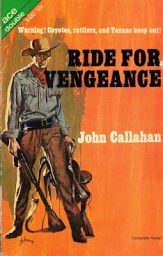 Westerns (Rough Edges): That’s how RIDE FOR VENGEANCE, a 1967 Ace Double Western by John Callahan (who was actually Joseph Chadwick) opens, and the author immediately enlists the reader’s sympathy for Ed Cavanaugh, who’s a fine protagonist, a decent man who can be plenty tough and hardboiled when he’s backed into a corner.
Westerns (Rough Edges): That’s how RIDE FOR VENGEANCE, a 1967 Ace Double Western by John Callahan (who was actually Joseph Chadwick) opens, and the author immediately enlists the reader’s sympathy for Ed Cavanaugh, who’s a fine protagonist, a decent man who can be plenty tough and hardboiled when he’s backed into a corner.
Art (Public Domain Review): Since Edgar Allan Poe’s stories of suspense and horror were first compiled as Tales of Mystery and Imagination in 1902, many gifted artists have tried their hand at illustrating them, notably Arthur Rackham, Edmund Dulac and Gustave Dore.
Horror (Por Por Books): I’ve been reading horror stories since 1970, when I was 9 years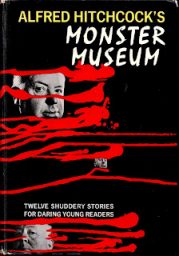 old and I saw a copy of Alfred Hitchcock’s Monster Museum (Random House, 1965) on the shelf of my grammar school library.
old and I saw a copy of Alfred Hitchcock’s Monster Museum (Random House, 1965) on the shelf of my grammar school library.
Fiction (Classic Horror Blog): Bierce would probably be shocked at the massive mileage that the following story has yielded for his legacy. When Robert W. Chambers incorporated many of its place names and fictional deities in his “King in Yellow” mythos (along with some from Bierce’s pastoral parable, “Haïta the Shepherd”), Hastur, Hali, and Carcosa would become infamous in the world of horror, finding additional notice in the works of H. P. Lovecraft.
Horror (Dark Worlds Quarterly): The Fearless Vampire Killers (1967) was a Roman Polanski comedy about vampire hunters in the Hammer tradition. The idea of a brave group of men (usually men) bound to the task of destroying Dracula and his kin comes from Bram Stoker’s novel.
Authors (Gravetapping): Robert J. Randisi passed away earlier this week. He was born on August 24, 1951, in Brooklyn, New York. Randisi wrote more than 500 novels across parts of five decades. His first published novel was the mystery, The Disappearance of Penny (1980), which appeared around the same time as his ghost written, Destroyer #40, Dangerous Games, by Warren Murphy.
Science Fiction (Black Gate): Chess in Sword & Planet fiction: I learned the basic rules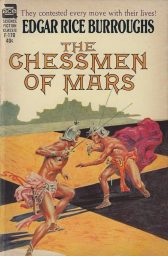 of chess in grade school and liked that it was a game that didn’t require luck. I didn’t do well at “luck!” The first adult I played was my brother-in-law, who rather gleefully mopped the floor with me. Out of resentment, I began to study and in our next game, probably when I was about 16, I mopped the floor with him.
of chess in grade school and liked that it was a game that didn’t require luck. I didn’t do well at “luck!” The first adult I played was my brother-in-law, who rather gleefully mopped the floor with me. Out of resentment, I began to study and in our next game, probably when I was about 16, I mopped the floor with him.
Actors (Uncovering Hollywood Files): Hollywood is full of stars who shine brightly, but some stand out for their sheer toughness. These actors go beyond the usual demands of their roles, showing incredible strength, resilience, and dedication. In this list, we’re spotlighting the 10 toughest actors in Hollywood history—those who have faced extreme challenges and delivered unforgettable performances.
Fantasy (DMR Books): ‘Adventurer archaeologists’ have been a thing for a long time. If Haggard made an actual archaeologist the hero of one of his novels, I don’t recall it. On the other hand, A. Merritt was something of an amateur archaeologist himself. Early in his journalistic career, he spent some time in the Yucatan, where he was particularly fascinated by Mayan cenotes.
James Bond (Forgotten Weapons): Today my friend Tom joins me at the BackUp Gun (BUG) Match for a bunch of James Bond guns. We tried a new match division this month called Wildcard, where you use a different division of gun (Revolver, Hideout, Backup, and Big 5) in each stage. Tom and I realized that between literary and cinematic Bond we can cover 4 really cool Bond pistol this way – a (faux) Fitz Special, Beretta 418, PPK/S, and ASP.
Radio (Old Time Radio): The Voyage of the Scarlet Queen was a high adventure radio program aired on Mutual from July 3, 1947 to February 14, 1948. It featured Elliot Lewis, who was also its director, as the sea captain Phillip Carney, and Ed Max as the supporting character Red Gallagher. Other actors that starred on the program include William Conrad, John Denner, and Ben Wright.
T.V. (Fantasy Literature): Perhaps you would have to be a baby boomer to fully understand just how big a deal The Man From U.N.C.L.E. was back in the mid to late 1960s. Riding the crest of the spy-wave mania created by the seismic shock that were the James Bond films starting in 1962, The Man From U.N.C.L.E. debuted on NBC TV in September 1964 and ran for four seasons
understand just how big a deal The Man From U.N.C.L.E. was back in the mid to late 1960s. Riding the crest of the spy-wave mania created by the seismic shock that were the James Bond films starting in 1962, The Man From U.N.C.L.E. debuted on NBC TV in September 1964 and ran for four seasons
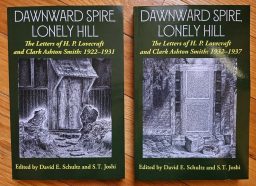 H. P. Lovecraft (Black Gate): I’ve been reading Dawnward Spire, Lonely Hill: The Letters of H.P. Lovecraft and Clark Ashton Smith, a two-volume set edited by David E. Schultz and S.T. Joshi. I talked about this in my company newsletter sent out a short while ago, and I’ll repeat it here for the interested.
H. P. Lovecraft (Black Gate): I’ve been reading Dawnward Spire, Lonely Hill: The Letters of H.P. Lovecraft and Clark Ashton Smith, a two-volume set edited by David E. Schultz and S.T. Joshi. I talked about this in my company newsletter sent out a short while ago, and I’ll repeat it here for the interested.
Fiction (Frontier Partisans): Heroic Signatures has been releasing e-book short stories of Conan — by such badasses as John C. Hocking and Stephen Graham Jones. Now they’re releasing a tale of Francis X. Gordon — El Borak, a Texas gunslinger-turned-adventurer-in-Afghanistan/Arabia. Gordon stands in the front rank of fictional Frontier Partisan heroes.
T.V. (Balladeer’s Blog): The Swamp Fox is a piece of Forgotten Television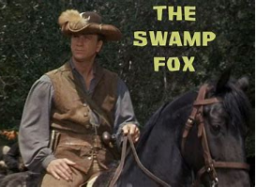 that ran sporadically on Walt Disney’s programs. Eight episodes were produced over two years with Leslie Nielsen in the lead role and each one filled a 1-hour time slot.
that ran sporadically on Walt Disney’s programs. Eight episodes were produced over two years with Leslie Nielsen in the lead role and each one filled a 1-hour time slot.
History (Foras Feasa): What is a ringfort? Is it a fairy fort? A rath? A cashel? A lios? Ringforts can be found all over Ireland. At least 47,000 exist. While some believe that date back to Irish prehistory, the vast majority date from the early Christian period (roughly 300-600AD). The name ringfort is a misnomer as they were actually fortified homesteads or farms.
Cool
Wow, what a set of links! Thank you very much.
Excellent review of THE SHIP OF ISHTAR.
Nice to see a link on THE MICRONAUTS!